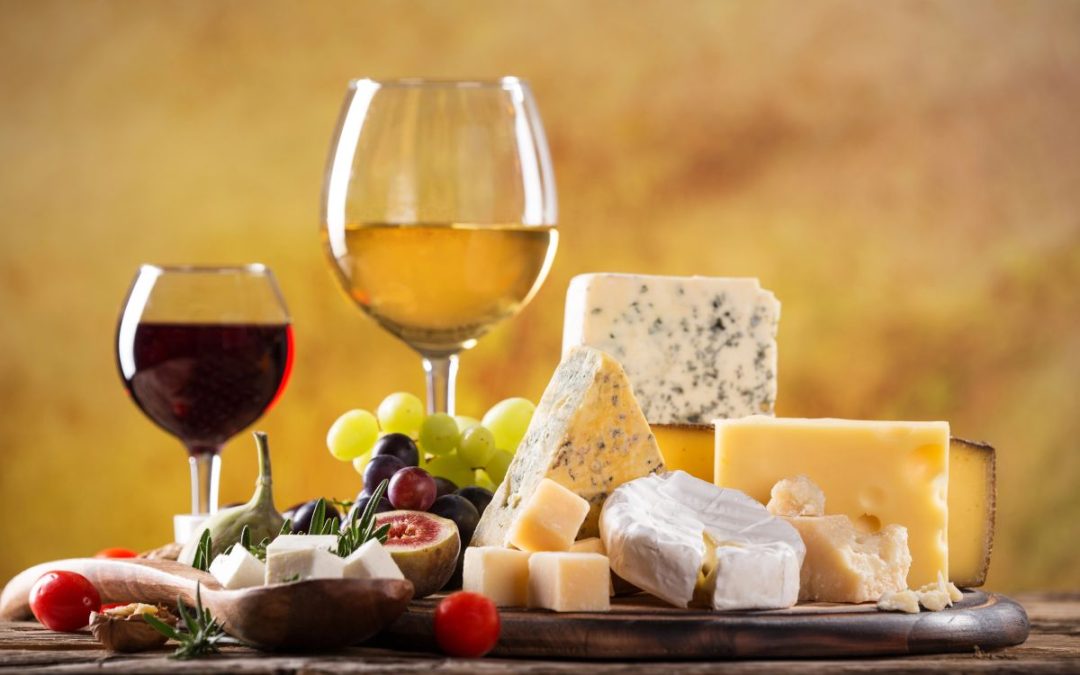Discover the secrets behind crafting harmonious food and wine combinations with our comprehensive guide. Learn the fundamental steps to pair like a pro and uncover the key factors to consider when selecting wines for your recipes. When selecting your wine (s) in our gift baskets, it’s a win win! Not only do your lucky recipients get to enjoy the perfectly paired selected items in their gift basket, but they can now have fun pairing the wine with other delectable delights! Master the Basics: Delve into the world of food and wine pairing and uncover the essential principles that ensure a balanced and delightful experience. From acidity to sweetness, flavor intensity to meat pairing, we’ve got you covered. So when selecting your food pairings with wine in our custom wine gift basket section, remember the following suggestions:
Unless you spend lots of time with food and wine zealots (or are one yourself), chances are no one will give you a hard time about always having the perfect pairing. However, there’s a reason why so many people are enthusiastic about certain combinations of wine and food. And while you don’t have to make a fuss about it every time you open a bottle of wine, enjoying some classic pairings can be an eye-opening way to explore the wide range of flavor unions. For anyone new to the wine game, it can be less intimidating to start with the food and follow from there with some tried and true selections. Ideal food and wine pairings don’t have to be a guessing game, and there are various guidelines to approach the task at hand.
Foods with powerful aromas should be paired with wines that have a similar aroma intensity. Choose wines that are flavored and scented similarly to the food. For instance, white wines with citrus undertones like Albarinho, Sauvignon Blanc, or Vermentino are best paired with foods like fish with lemon, for example. For mushrooms, which over time develop aromas of undergrowth, earth, and truffle, look for Nebbiolo or Pinot Noir. Many of these pairs seem like they were always meant to be, often reflecting the common saying, “What grows together, goes together.”
Sweet
Wine with dessert can be a personal treat for those with a sweet tooth. Dessert wines come to the rescue here, which makes sense. They go well with cakes and sweet pies, as well as spicy muffins, berry rolls, gingerbread, and pancakes with sweet sauces. At the same time, the wine should not be sweeter than the delicacy itself, or the flavor will fade. Brut goes greatly with the desserts. It goes especially well with fruit cookies, cream ice cream, and nut meringues. Experts advise pairing French Cabernet and Merlot or German Riesling with bitter chocolate.
Salty
Salty food gives body to the wine while reducing bitterness and acidity. Enhances the wine’s fruity character and softens the astringency. Cheeses with a salty flavor pair well with elegant high-acid wines. In most cases, aged cheeses have a salty flavor (gruyere, parmesan, cantal, etc.).
Sour
The acid boosts the wine’s body, sweetness, and fruitiness while decreasing its acidity. Food acidity is a good wine friend as it balances wine with high acidity and increases fruitiness. Wines with low acidity will appear flat, sluggish, and lack focus when paired with such food.
Bitter
Food bitterness increases the bitterness of wine. If the dish and wine have acceptable levels of bitterness on their own, they can reinforce each other and cause an unpleasant sensation, though this is highly individual.
Umami
Umami-flavored foods sway wine perception as well as sweetness. This component was introduced much later than the others. The peculiarity is that, unlike the other components, umami is difficult to detect alone. To get a sense of umami, try uncooked mushroom and compare it to a preheated 30 seconds in the microwave. Although salted or smoked seafood and meat contain umami, hard cheeses like Parmesan contain a lot of salt, making them much easier to pair with wine.






